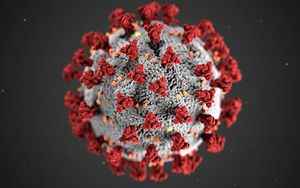(Finance) – The European Medicines Agency (Ema) Committee for Human Medicines recommended authorizing two vaccines adapted to provide broader protection against Covid-19. It is about Comirnaty Original / Omicron BA.1 And Spikevax Bivalent Original / Omicron BA.1, by Pfizer Biontech and Moderna.
THE vaccines, as announced by the EMA, they are intended for people aged 12 years or older who have received at least the primary vaccination against Covid-19. Aifa will decide on 5 September.
In the last 24 hours – according to the data that emerged from the bulletin of the Ministry of Health – in Italy they registered 20,503 new cases of Covid (yesterday there were 21,817) e 68 dead (yesterday 90). Since the beginning of the pandemic, there have been at least 21,888,255 infections in our country and 175,663 deaths. THE processed molecular and antigenic buffers there are 155,751, or 11,744 less than yesterday. The rate of positivity it is 13.2% against 13% yesterday.
On the hospital front i beds occupied in ordinary Covid wards they are -129 (yesterday -336), for a total of 4,962 hospitalized. The beds occupied in intensive care they are -6 (yesterday -13) for a total of 207, with 18 admissions to resuscitation (yesterday 17). The people recovered or discharged are a total of 21,078,398 and 32,169.
The positive current they turn out to be 634,194 in all, equal to -11,739 compared to yesterday. At the regional level, the greatest number of infections are recorded in Lombardy (+2.972 cases) e Veneto (+2,513 cases).
In the last week – according to i data released today by the GIMBE Foundation – Covid-19 cases in Italy return to decline (-15.8%). Intensive care (-11%), ordinary hospitalizations (-14.9%) and deaths (-24.4%) are also decreasing.
“After the rebound last week – he declares Nino Cartabellotta, president of the GIMBE Foundation – the number of new weekly cases returns to settle around 149 thousand, with a 7-day moving average of over 21 thousand cases per day, documenting that since mid-August, beyond modest fluctuations, the curve is in a plateau phase “(Figure 4). In all Regions there is a percentage decrease in new cases (from -3.2% in Basilicata to -32% in Sardinia) (table 1). Compared to the previous week, in 98 Provinces there was a decrease in new cases (from -1.3% in Parma to -43% in Gorizia), in the remaining 9 Provinces there was an increase (from + 0.3% in Turin to + 23.6% of Lecco). The incidence is below 500 cases per 100,000 inhabitants in all provinces. In this phase of relative stability of the new infections – concludes Cartabellotta – the descent of the fifth wave has now stopped and viral circulation remains high: as of 30 August over 660 thousand positives (a number widely underestimated), a positive rate of antigenic tampons at 16% and an average of over 21,000 new cases per day. Numbers destined to increase with the resumption of work activities, the reopening of schools, the greater attendance of closed places, the forfeiture of the obligation to wear a mask on public transport from 30 September and the breezy reduction of the isolation period from 7 to 5 days prior negative test and 21 to 15 days for positives. On the other hand, despite the repeated alarms, Centaurus has been circulating for three months without taking over Omicron 5 and the European Center for Disease Control and Prevention classifies it as a variant of interest and not of concern: it is able to evade the immune response, but there is no evidence of its greater transmissibility or clinical severity. On the susceptible population side, on the other hand, the number of people at risk of serious illness is increasing: as of August 31st there were 15.2 million without a fourth dose, in addition to 892,000 unvaccinated, 1.88 million without a third dose. With the coming autumn season it is necessary to accelerate the vaccination of over 60 and frail people as much as possible, without waiting for the updated vaccines for which, among other things, there is still no evidence of efficacy in preventing the serious disease, on which the old vaccine it remains an excellent weapon “.
“On the hospital front – he says Marco Mosti, operational director of the GIMBE Foundation – the decline in hospitalizations continues both in the medical area (-14.9%) and in intensive care (-11%) ». From July 26, in five weeks, hospitalizations fell from 434 to 226 in the critical area and from 11,124 to 5,427 in the medical area respectively (Figure 7). As of August 30, the national employment rate by COVID patients was 8.5% in the medical area (from 4.2% in Piedmont to 22.7% in Umbria) and 2.5% in the critical area ( from 0% of Molise, Autonomous Province of Trento and Valle D’Aosta to 5% of Abruzzo) (figure 8). Intensive care admissions are also down – points out Mosti – with a 7-day moving average of 18 admissions / day compared to 23 in the previous week “.
